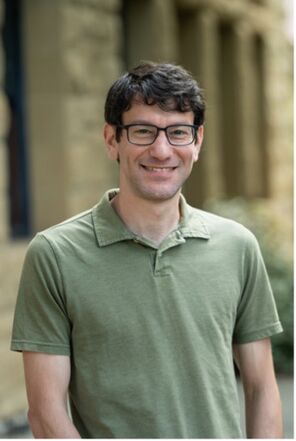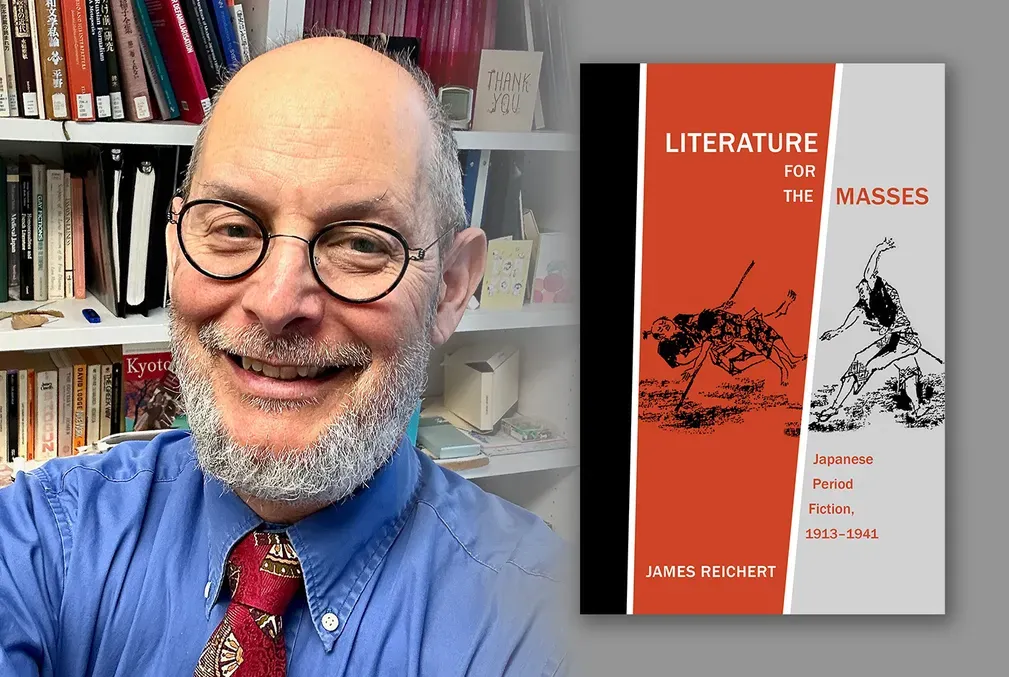A ‘magic’ angle between layers in a stacked nanoscale system offers intriguing material properties
A new study describes a platform that can be fine-tuned to investigate the electronic properties of matter at small scales by shifting individual layers to generate novel lattice patterns.
Working with a nanoscale analog of the mineral mica, which is famously separable into thin sheets, Stanford researchers have created a novel platform for studying the behavior of matter at extremely small scales.
The researchers constructed a stacked material made of identical layers just a few atoms thick that can be twisted into different orientations. Shifting one of the two-dimensional layers by a very slight angle—dubbed a “magic” angle—endowed the material with intriguing electrical properties. The researchers successfully measured these properties at even smaller scales than were previously achievable.
Further study of these kinds of matter systems could advance our fundamental understanding of the nanoscale, where the laws of quantum physics reign. Scientists increasingly hope to harness knowledge of how materials behave at the nanoscale for use in a range of applications.
“We’re experimenting with layered stacks of materials that have weakly bound individual layers you can manipulate, similar to playing with mica,” said Ben Feldman, an assistant professor of physics at Stanford’s School of Humanities and Sciences and senior author of a study that was published April 18 in Science. “Our latest results offer crisp statements about what kinds of electronic states occur in these sorts of materials and how they depend on experimental tuning knobs, which enable control over promising material properties.”
“Thanks to the tunability of our platform, where we have a lot of freedom to change the angles between layers of a given material and measure the effects, we can obtain physics that are unique relative to other systems,” said lead author Ben Foutty, a graduate student in Feldman’s lab.
Of clear adhesive tape, plastic wrap, and gelatin
The Stanford researchers chose the inorganic material tungsten diselenide (WSe2) to make their tiny stacked system because it had been predicted to host exotic electronic states. As a bonus, the material also has few impurities, can easily be prepared into homogenous, two-dimensional layers, and is a semiconductor with known electrical properties.
In recent years, researchers started examining the novel properties that can emerge when layered materials—normally in neat stacks like a ream of papers—are ruffled so that the edges no longer neatly line up. Adding twist angles to the stacked layers in this way creates spatially varying alignments of atoms in each layer and induces interactions between their electrons that alter material behaviors. Conceptually, this twisting is quite like overlaying two regularly spaced mesh screens and rotating one of the screens to form interference patterns, known as moiré patterns.
To obtain tungsten diselenide in exquisitely thin layers suitable for this kind of experiment, the researchers began with the surprisingly effective practice of using clear adhesive tape—the same that might be used for gift wrapping—to rip off strips from a crystal. The thin exfoliated flakes, which crumple and flex like plastic wrap, were then stuck (using the tape) on a silicon surface.
Next, a computer-controlled micromanipulator pressed down with a stamp made of a squishy polymer, akin to gelatin, to pick up one half of a thin flake of tungsten diselenide. That peeled layer was twisted slightly and placed back on the other half of the original layer. The upshot was two stacked tungsten diselenide layers offset at a certain twist angle from each other.
Using this approach, the Stanford researchers constructed a device measuring five micrometers (millionths of a meter) across, or about 1/20th the diameter of human hair, and 100 nanometers (billionths of a meter) in height. The studied areas of interest, where two layers meet and interact, measured a mere nanometer thin.
To learn about the electrical properties of this slightly twisted arrangement of atoms, the researchers used a special kind of scanning microscope with a narrow tip of roughly 100 nanometers. The tip gauged electrical charge and thus revealed conducting or insulating properties—where current flows and does not flow, respectively—arising from the aggregate of the interactions between electrons in the askew layers.
Previous efforts by other research teams had not been able to probe such low twist angles or gather data with such fine spatial resolution and so missed key details on how twist angle impacts material properties,” Feldman said. “With our techniques and tools, we can map out how the electronic properties change as you go from spot to spot at different twist angles. We can obtain local information instead of having measurements get smeared out from variations in twist angle across the device.”
A “magic” angle
Via this experimental approach, the Stanford researchers demonstrated that interesting properties emerged at a very slight but highly specific twist angle of 1.23 degrees—the so-called magic angle—between the two layers. The central bulk of the device acted as an insulator, while around the boundary, electric current could still flow along a particular direction, thus forming a so-called topological insulator known as a quantum anomalous Hall insulator. Scientists are actively investigating these insulators and related topological materials with an eye toward using these devices in quantum computing and other applications. Furthermore, achieving this behavior did not require an external magnetic field, which is necessary in other systems and limits their potential use.
Overall, the findings indicate that researchers still have much to learn when dealing with solids at such Lilliputian scales. Gaining mastery over the tunable parameters of such systems—for instance, by imparting a slight twist to offset adjacent layers—could advance our understanding of materials for use in quantum-level applications.
Besides quantum computing, another example of a potential application is quantum simulation, which models the behavior of a given system through another quantum system in ways that conventional, or “classical,” physics may not adequately capture. Changing the twist angle corresponds to adjusting parameters of the quantum model. Mapping the resulting behavior may help bring superconductivity (a property of certain materials where there is no resistance to the flow of electricity) closer to operating in temperatures we experience on Earth.
“We were able to experimentally show that interesting physics comes about in a very narrow window of parameter space of a particular twist angle,” Feldman said. “Our findings can be fed back into theories of these condensed matter systems to make more accurate predictions of when intriguing phenomena should be expected.”
Acknowledgements
Additional Stanford co-authors include Carlos R. Kometter, graduate student in the Department of Physics, School of Humanities and Sciences. Other co-authors include Trithep Devakul, Aidan P. Reddy, and Liang Fu of MIT; and Kenji Watanabe and Takashi Taniguchi of the Research Center for Materials Nanoarchitectonics, Tsukuba, Japan.
This study was funded by the Department of Energy; the Air Force Office of Scientific Research; the World Premier International Research Center Initiative, MEXT, Japan; an Alfred P. Sloan Foundation Fellowship; and a Cottrell Scholar Award. Part of this research was performed at the Stanford Nano Shared Facilities and was supported by the National Science Foundation.
To read all stories about Stanford science, subscribe to the biweekly Stanford Science Digest.





